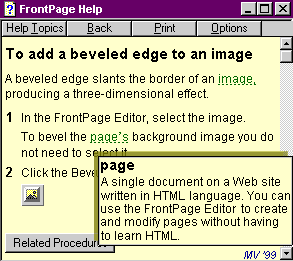VirtualMV/Internet and Web/World Wide Web
| Internet and Web | ||
|---|---|---|
| Theory | Introduction | What is HTML? | Client Server ecosystem | Glossary | History and Future | How the Internet works | Types of Website | Markup Languages | Interactive Websites | | |
| Web Tools | Web Browsers | Search Engines (SEO Optimization) | World Wide Web (Hypertext and Page) | Cookies | Email | Discussion Forums | FTP | (SSH, IRC) | |
| Technologies | Connecting | Broadband | Mobile | Web Conferencing | Intranets, Extranets, Tunneling | Gateway Servers | | |
| Issues | Security | Legal (Privacy, Confidentiality, Integrity) | Copyright and Fairdealing | Accessibility | Culture and Netiquette | | |
| Web Site Development | Planning ( Types | For Mobile) | Development (Design Components | Graphic Design) | Programming | Hosting | Marketing and Promotion | Advertising | Business Intelligence | Monitoring and Maintenance (Performance Tuning) | |
| Web Site Management | Roles | Management | User Expectations | Content Management | Site Maintenance | Policies and Guidelines | Promotion | Risk Management | |
Overview
By the end of this page you will be able to:
|
Resources
- Beginning surfing (8/7/2002). Retrieved , from http://www.northernwebs.com/bc/bc11.html
- An Overview of the World Wide Web (8/7/2002). Retrieved , from http://www.cio.com/WebMaster/sem2_home.html
- The Basics using Netscape Navigator. (8/7/2002). Retrieved , from http://home.netscape.com/browsers/using/newusers/basics/index.html
- Tim Berners-Lee (8/7/2002). Retrieved , from http://www.w3.org/People/Berners-Lee/
- Comparison of Netscape 4.5 and IE 4.01. (8/7/2002). Retrieved , from http://www.cnet.com/Content/Reports/Shootouts/Brow0701/index.html
- Hello :) free nz site... www.orcon.net.nz
- You should use some java script to lighten up your pages. good site http://www.dynamicdrive.com/dynamicindex1/index.html
- Streaming video becoming driver for Web site traffic. Retrieved, from
http://techrepublic.com.com/5100-6296_11-5055280-1.html A good and professional site for IT news, quite neat design with bright color
- Beginning surfing (8/7/2002). Retrieved , from http://www.northernwebs.com/bc/bc11.html
- Some good alternatives to Microsoft IE and Netscape Nav
- Fire Fox : http://www.mozilla.org/products/firefox/
- Myie2 : http://www.myie2.com/html_en/home.htm
- Avant : http://www.avantbrowser.com
- Have a look at some of these pages to see how readable a page can be. These pages are designed to be dyslexic-friendly. They are also friendly for non-dyslexics - and the content applies largely to all of us too. http://www.dyslexic.org/style.htm
Hypertext
Development
The World Wide Web (generally referred to as WWW or W3 or just The Web) is a hypertext system for accessing multimedia (still and moving pictures as well as sound). As covered earlier, it was developed at the CERN Physics Laboratory in Switzerland by Tim Berners-Lee Reference : Tim Berners-Lee (8/7/2002). Retrieved , from http://www.w3.org/People/Berners-Lee/
Defined
Hypertext is a facility to navigate through information. For example Microsoft Windows online Help is a hypertext system (see Figure) - a summary page is given and you can then pick a highlighted word and go to that information. These are known as hypertext links and typically are displayed underlined and in another colour. A mouse click on a hyperlink will cause the linked document to be displayed. The linked document could be more text or some other multimedia document. It could exist on the same server or another WWW server anywhere in the world.
Web Pages
Pages and Protocol
A WWW document is often referred to as a page. The "top" or first page of a web site is called the homepage – from the homepage there should be a menu to access the sub-pages of that web site. The term homepage is also the first page that displays when you start up your browser – you can change your browser’s default homepage. Traditionally index.html is the default home page and on many unix systems this will also automatically restrict any folder viewing by users. Microsoft uses default.htm (or html) on IIS.
The standard protocol that supports the transfer of hypertext documents is Hypertext Transfer Protocol, or HTTP. The WWW actually understands all the previous Internet protocols such as FTP, gopher and news. This means that you can use the same software to access the WWW and FTP sites, gopher resources and newsgroups. It is important when you are referencing a page that you give its exact location, with no typing errors.
Uniform Resource Locator (URL)
The address of a web resource is called a URL, or Uniform Resource Locator. The URL defines the address for the resource precisely, and has four parts:
- The type of resource, for example http, ftp, news, gopher followed by a colon and double back slash (://).
- The TCP//IP address or domain name, with an optional port number, followed by a back slash.
- The pathname followed by a back slash. If no pathname is given then the root directory is assumed. In the case of a gopher the pathname refers to the gopher resource code.
- The filename. If no filename is given then index.html, index.htm or default.htm is assumed. If none of these exists then a directory listing will be created on the fly.
The following are some examples of correct URL formats:
- http://www.eit.ac.nz/
- http://www.eit.ac.nz/course/computing/BCS.html
- http://129.70.38.95/index.html
- ftp://129.70.38.95
- gopher://123.245.72.117
Note that URLs can also contain IP addresses.
 References
References
|
virtualMV | Superquick wiki guide | Please give me some feedback |
VirtualMV/Internet and Web/World Wide Web. (2024). In WikiEducator/VirtualMV wiki. Retrieved December 22, 2024, from http:https://wikieducator.org/VirtualMV/Internet_and_Web/World_Wide_Web (zotero)
|

